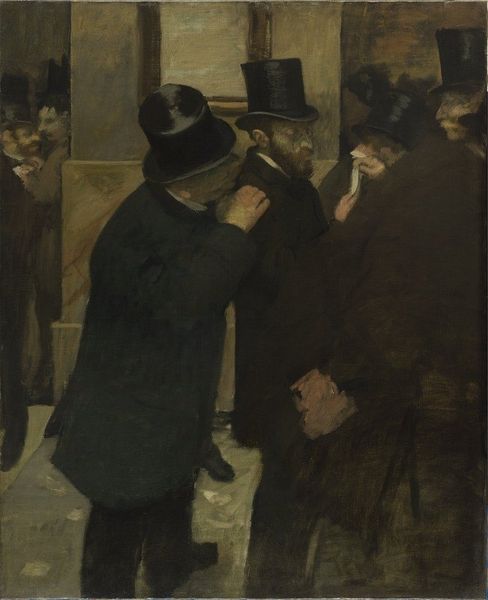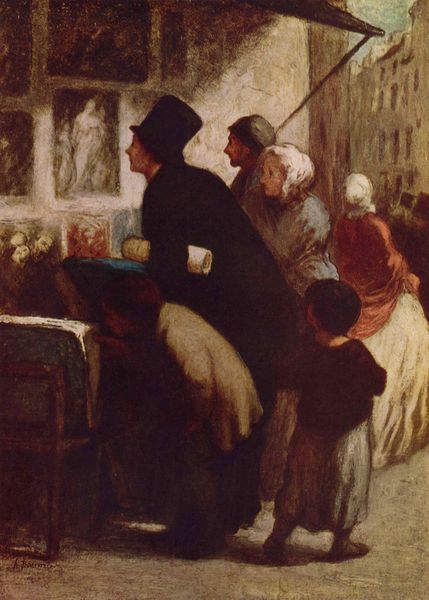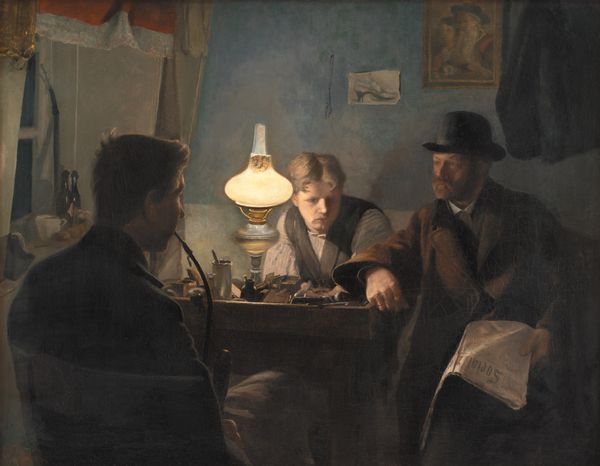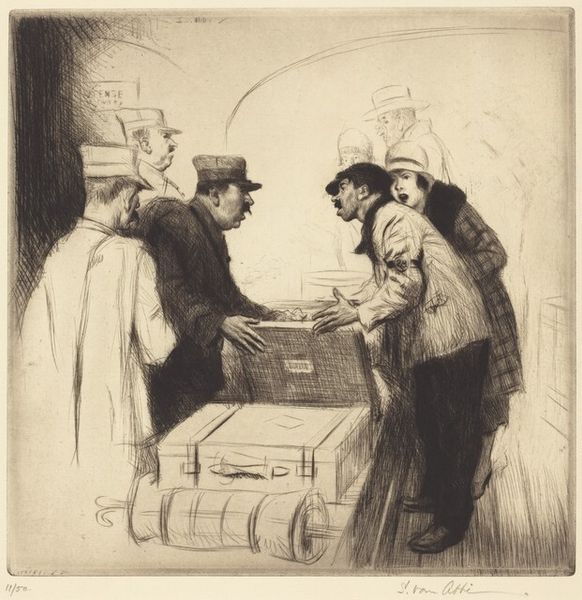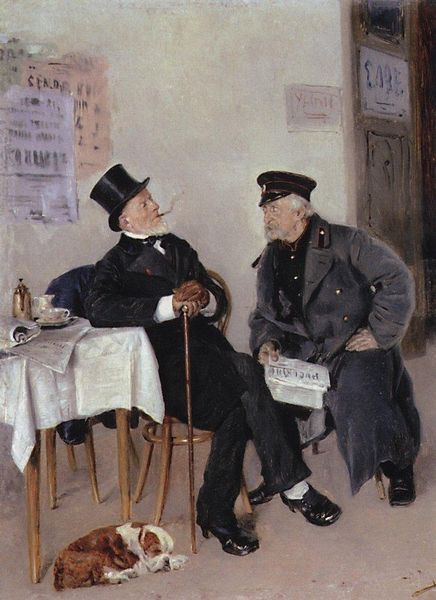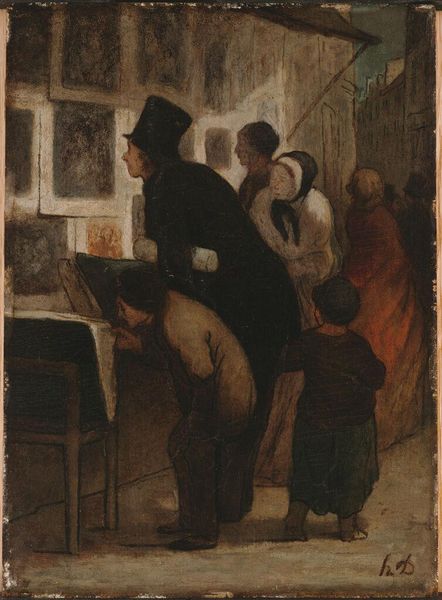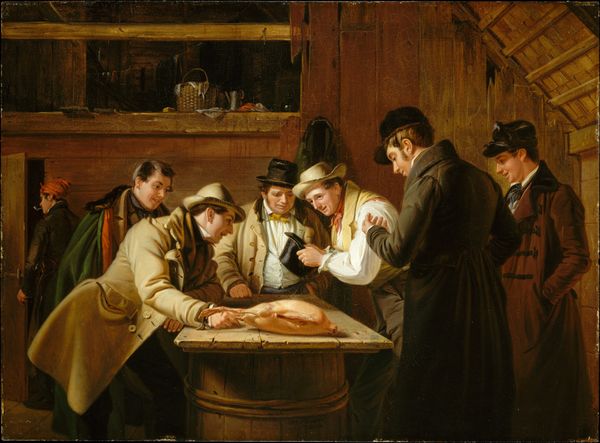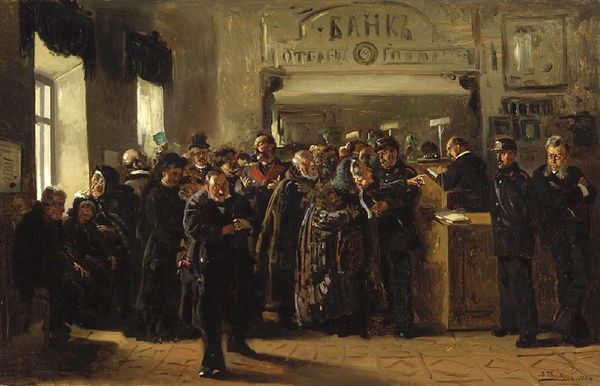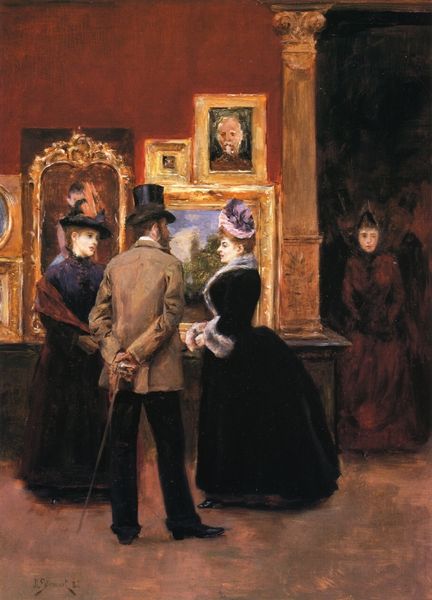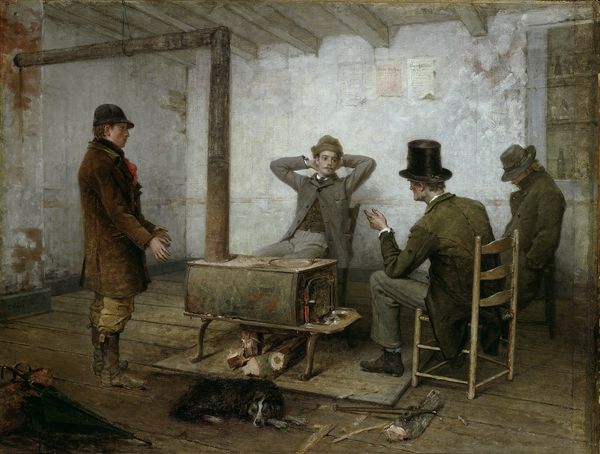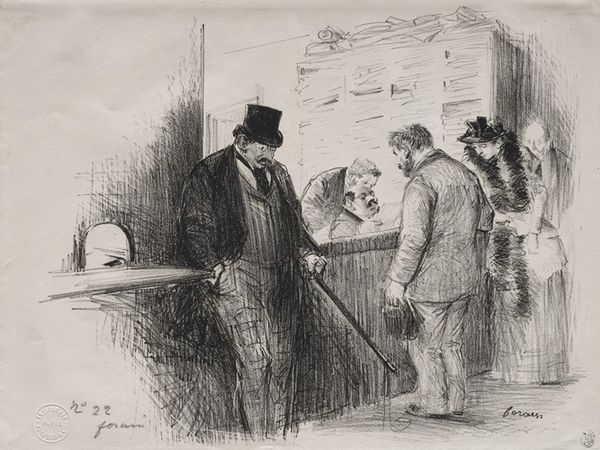
painting, oil-paint
#
portrait
#
16_19th-century
#
painting
#
oil-paint
#
oil painting
#
group-portraits
#
genre-painting
#
portrait art
#
realism
Copyright: Public domain
Curator: Immediately I see an image steeped in tradition—something formal, perhaps even a bit somber. Editor: Eastman Johnson's oil study from 1880, "Study for 'A Glass with the Squire,'" shows two men, formally dressed, raising glasses as though in a toast. Johnson gives us a snapshot of society. Curator: The symbols here feel very coded, don't they? The dark suits, the raised glasses. The painting appears like it might speak of legacy, of ritual... even obligation. There's an undeniable seriousness embedded within the composition. Editor: That sense of obligation, that's so key. This piece provides insights into class, masculinity, and the rituals reinforcing those hierarchies during the late 19th century. I see themes around wealth and status in this moment. Curator: Absolutely. But even the act of raising a glass itself is rich with symbolism—a shared moment of unity, celebration, or sealing an agreement. It transcends just a social gathering, pointing towards an acknowledgement of deeper-seated commonalities and social norms. Editor: Look closer. Who are they toasting? I am left wondering if this is something binding them or benefiting only one. What agreement needs sealing in oil on canvas, forever memorialized and out of whose pocket. Curator: Perhaps. Look at the room they’re in – its furnishings and modest appearance suggest something less grandiose. Could it symbolize more about preserving traditions within existing confines? I find there’s still power here and not only through wealth but in the tradition and visual motifs represented. Editor: It invites a consideration about who held that power, how it was visually communicated and the exclusions upon which it relies. How wealth, specifically inherited wealth, excludes many from a social order they never created. Curator: Indeed. Thank you for contextualizing how we've interpreted this tableau, allowing us to both see the traditional elements alongside broader questions around agency and legacy. Editor: And thank you for diving into the deep symbolic currents, emphasizing that the surface reveals far more intricate and socially entrenched power dynamics.
Comments
No comments
Be the first to comment and join the conversation on the ultimate creative platform.
